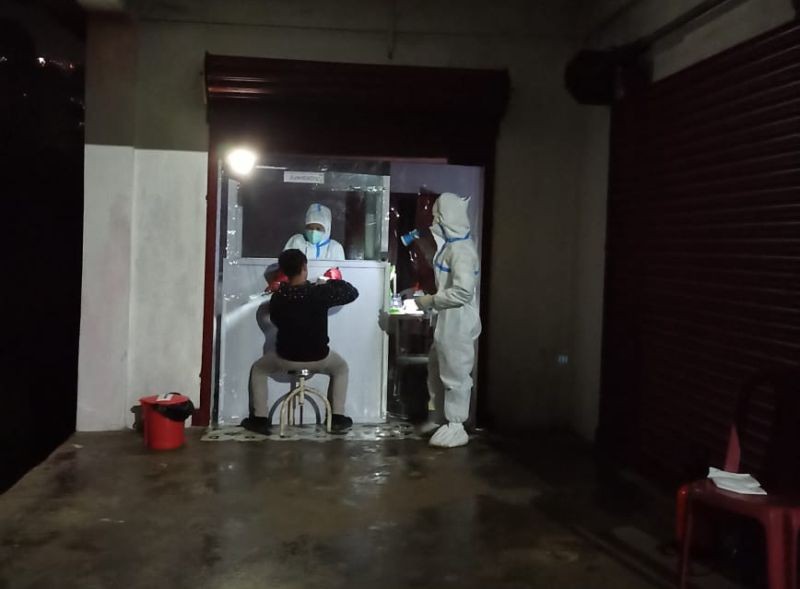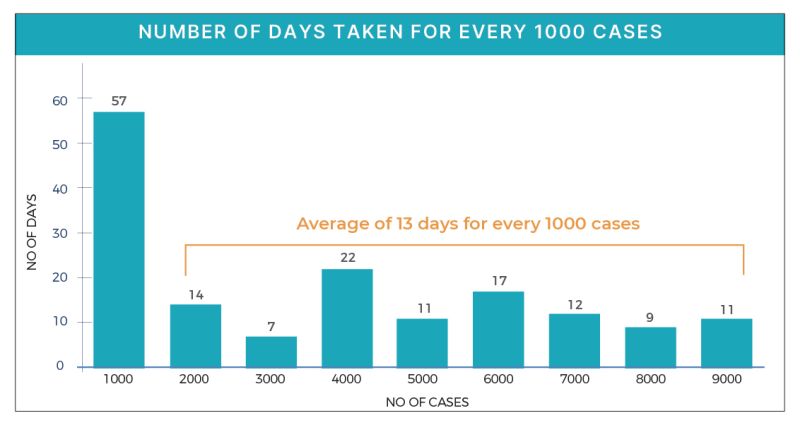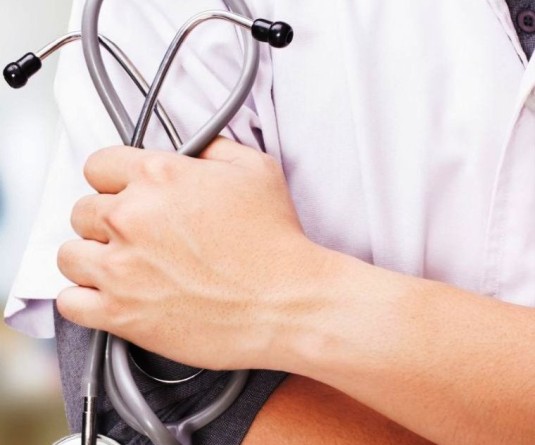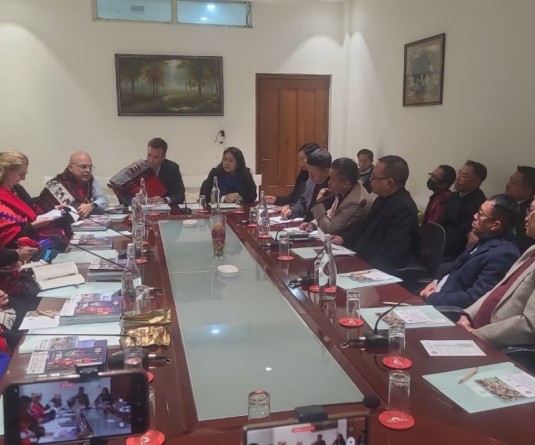Health workers at a sample collection centre in Zunheboto. (For representational purposes only)

IDSP report strongly hints at cases with no known source of contact
Morung Express News
Dimapur | November 7
Detection of COVID-19 cases in Nagaland dropped during the week, the state reporting 382 confirmed cases in between October 31-November 6. The previous week’s total was 509.
District-wise, Dimapur (246), Kohima (114) and Mon (11) reported the maximum cases over the week
Despite the drop in numbers, sample positivity was still high at 9.12 percent (as on November 6) against the national 7.26 percent, informed the state Integrated Disease Surveillance Programme, Health & Family Welfare, Nagaland, in its weekly COVID roundup. The 382 cases were out of 3,218 samples tested, returning a positivity rate of 12 percent for the week, down by 1 percentage point from the previous week. The state has tested a total of 1,01,565 samples as on November 7.
As has been the trend, in recent weeks, positive traced contacts have consistently outnumbered the armed forces in terms of case count. The week’s 382 cases comprised 203 traced contacts, 141 armed forces personnel, 22 front line workers and 16 returnee/travelers.
Another worrying trend has been the increasing positivity among patients attending flu clinics. This segment of positive cases have increased to 8 percent (267 out of 9,327), which was at 5 percent as October drew to a close. “These cases either had or have symptoms or got tested for travel/surgery purposes. They had or have no history of travel or contact with a confirmed case,” the report said. 
The report reiterated the scenario of a youthful population becoming unintentional spreaders or “potential drivers of community spread” as more than 50 percent of the 3,245 positive traced contacts (as on November 7) fell in the 21-40 year-old age group.
Households and workplaces continue to be the most common places of infection (55%).
It said, “Stigma around COVID-19 stops people from disclosing symptoms to a point where they become critical and lose hope. The community should help people in getting tested, support COVID affected families and provide maximum support to contact tracing teams to avoid community transmission. This is a common fight against one enemy.”
The report further cautioned, “There is again a 1% increase in the 60 plus age group which indicates an epidemiological shift from the younger to the older age groups. The percentage of positive traced contacts in the 60-plus age group is now 5%.” It observed that infections in people with co-morbidities are making a gradual surge, increasing to 0.8 percent from 0.7 percent, “which could mean more hospitalisations and even deaths.”
The state also confirmed 6 COVID-19 deaths during the week, with the IDSP adding that 62 percent of all deaths were below 60 years of age. 28 of the 39 confirmed COVID deaths were from Dimapur, 8 from Kohima, and 1 each in Mon, Wokha and Mokokchung. Diabetes was an associated complication in almost 50 percent of all deaths.
The mortality rate increased to 0.42 from 0.37 percent, meanwhile, there was a decimal shift national average, dropping to 1.48 percent from 1.49 percent.
October reported the maximum number of deaths (15) critical cases needing ICU care (35) and invasive ventilation (13).
Recovery, testing, distribution
Recovery consistently outnumbering daily case count the past week, except November 7, has helped push the recovery rate to 87.86 percent from 80 percent last week. The country’s recovery rate was over 92 percent. Testing improved to 50.10 per thousand population, over the course of the week, from 47.88 per thousand. During the same period, the country’s testing figure improved to 86.51 per thousand.
Overall, the armed forces still was the sector reporting the most number of cases at 45 percent or 4,074 of the total cases as on November 7. The total of traced contacts stood at 3,245 (29 percent), returnees- 1,675 (21 percent) and frontline workers- 461 (5 percent).
The surveillance teams have traced a total of 27,898 contacts including 11,725 primary contacts.
438 cases were in home isolation as on November 7.
Fever, cough and shortness of breath have been the most common symptoms with fever and cough reported in 77 percent and 48 percent of the cases, respectively.






